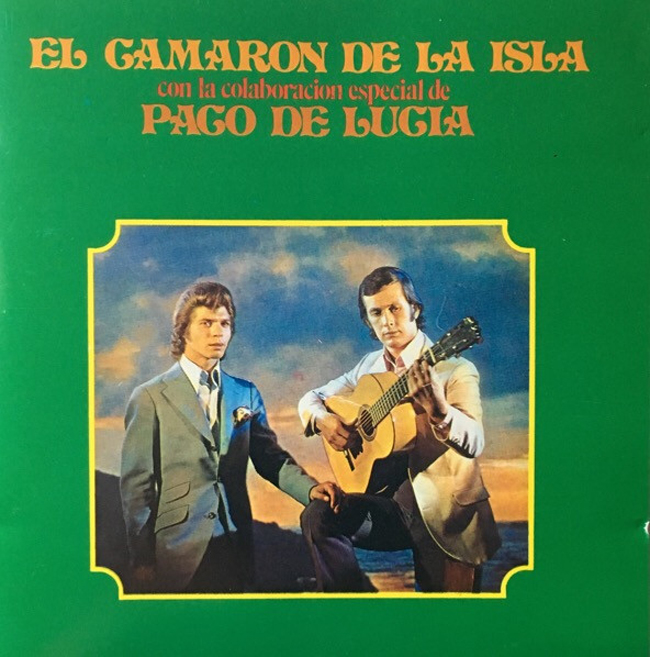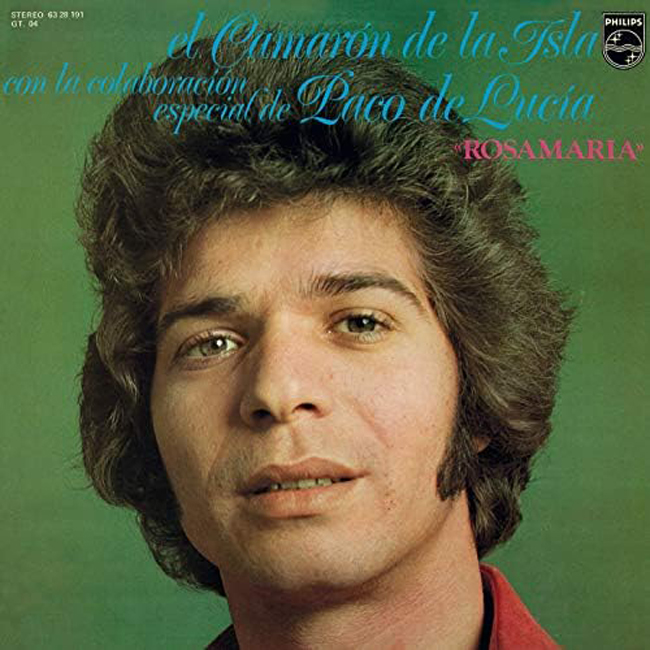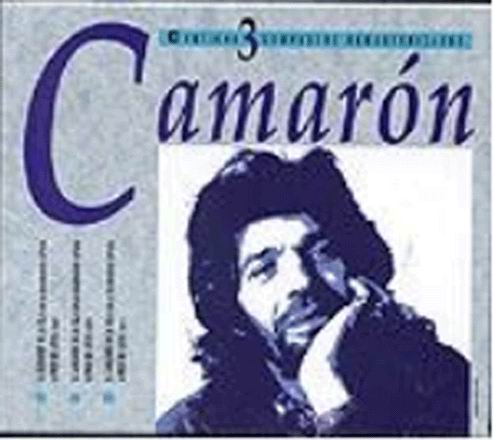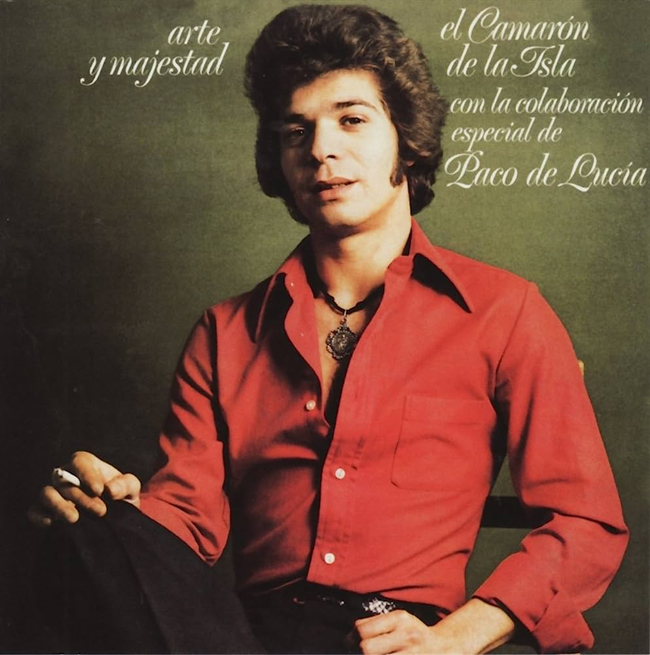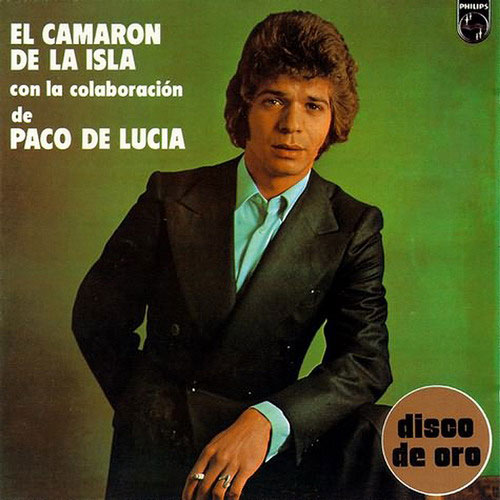- 🚚 📦 WORLDWIDE SHIPPING ✈️ 🌍
🚚 📦 WORLDWIDE SHIPPING ✈️ 🌍
Son tus ojos dos estrellas - Camarón y Paco de Lucia
Ref: 50112UN76
15'25 €
Si el producto está en stock la salida es inmediata. Si no el tiempo de fabricación es de
$13'78
Quantity:
Available stock: 1
If the product is in stock the delivery is immediate. Otherwise, the fabrication time is 3 working days
The price in $ is an indicator, as the exchange rates are changing constantly.
Shipment period:
If the product is in stock the delivery is immediate. Otherwise, the fabrication time is 3 working days
Description:
Camarón and Paco's third full lenght was released in 1971 under the title 'Son tus ojos 2 estrellas'.
Through this album, Camarón ratifies his relevance. What seemed promising in his previous album simply solidified in this 1971 effort. His importance is made clear not only by his original quejidos but becuase of his particular personality as a cantaor. His music is constantly on the radio and is he is performance is frequently requested at Andaluz summer festivals where he will be present with the guitar of Paco de Lucia or Ramón de Algeciras.
Antonio Sánchez and Paco de Lucía are on the credits because of their performances on guitar. There is also a great variety of cantes, which show José's thirst for knowledge. All that is good is valuable. That is how he leaves us the difficult short and long petenera, supposedly bad for gypsies; he makes a malagueña from Chacón; a splendid soleá apolá, «El espejo donde te miras» and another one by Alcalá; in the Fandango «Sin motivo ni razón» he brings back Gabriel Macandé's style; he offers us a Minero Fandango which Paco de Lucía accompanies with the same Minero tone that Ramón Montoya recorded with and few knew how to use; in the stead of seguiriyas he gathers the sounds of Cagancho; in the stead of tangos «lolailo» comes back achieving both commercial success and Flamenco quality; he makes it clear no rival can stand him in the bulerías.
Through this album, Camarón ratifies his relevance. What seemed promising in his previous album simply solidified in this 1971 effort. His importance is made clear not only by his original quejidos but becuase of his particular personality as a cantaor. His music is constantly on the radio and is he is performance is frequently requested at Andaluz summer festivals where he will be present with the guitar of Paco de Lucia or Ramón de Algeciras.
Antonio Sánchez and Paco de Lucía are on the credits because of their performances on guitar. There is also a great variety of cantes, which show José's thirst for knowledge. All that is good is valuable. That is how he leaves us the difficult short and long petenera, supposedly bad for gypsies; he makes a malagueña from Chacón; a splendid soleá apolá, «El espejo donde te miras» and another one by Alcalá; in the Fandango «Sin motivo ni razón» he brings back Gabriel Macandé's style; he offers us a Minero Fandango which Paco de Lucía accompanies with the same Minero tone that Ramón Montoya recorded with and few knew how to use; in the stead of seguiriyas he gathers the sounds of Cagancho; in the stead of tangos «lolailo» comes back achieving both commercial success and Flamenco quality; he makes it clear no rival can stand him in the bulerías.
Reviews:
Camarón and Paco's third full lenght was released in 1971 under the title 'Son tus ojos 2 estrellas'.
Through this album, Camarón ratifies his relevance. What seemed promising in his previous album simply solidified in this 1971 effort. His importance is made clear not only by his original quejidos but becuase of his particular personality as a cantaor. His music is constantly on the radio and is he is performance is frequently requested at Andaluz summer festivals where he will be present with the guitar of Paco de Lucia or Ramón de Algeciras.
Antonio Sánchez and Paco de Lucía are on the credits because of their performances on guitar. There is also a great variety of cantes, which show José's thirst for knowledge. All that is good is valuable. That is how he leaves us the difficult short and long petenera, supposedly bad for gypsies; he makes a malagueña from Chacón; a splendid soleá apolá, «El espejo donde te miras» and another one by Alcalá; in the Fandango «Sin motivo ni razón» he brings back Gabriel Macandé's style; he offers us a Minero Fandango which Paco de Lucía accompanies with the same Minero tone that Ramón Montoya recorded with and few knew how to use; in the stead of seguiriyas he gathers the sounds of Cagancho; in the stead of tangos «lolailo» comes back achieving both commercial success and Flamenco quality; he makes it clear no rival can stand him in the bulerías.
Through this album, Camarón ratifies his relevance. What seemed promising in his previous album simply solidified in this 1971 effort. His importance is made clear not only by his original quejidos but becuase of his particular personality as a cantaor. His music is constantly on the radio and is he is performance is frequently requested at Andaluz summer festivals where he will be present with the guitar of Paco de Lucia or Ramón de Algeciras.
Antonio Sánchez and Paco de Lucía are on the credits because of their performances on guitar. There is also a great variety of cantes, which show José's thirst for knowledge. All that is good is valuable. That is how he leaves us the difficult short and long petenera, supposedly bad for gypsies; he makes a malagueña from Chacón; a splendid soleá apolá, «El espejo donde te miras» and another one by Alcalá; in the Fandango «Sin motivo ni razón» he brings back Gabriel Macandé's style; he offers us a Minero Fandango which Paco de Lucía accompanies with the same Minero tone that Ramón Montoya recorded with and few knew how to use; in the stead of seguiriyas he gathers the sounds of Cagancho; in the stead of tangos «lolailo» comes back achieving both commercial success and Flamenco quality; he makes it clear no rival can stand him in the bulerías.












